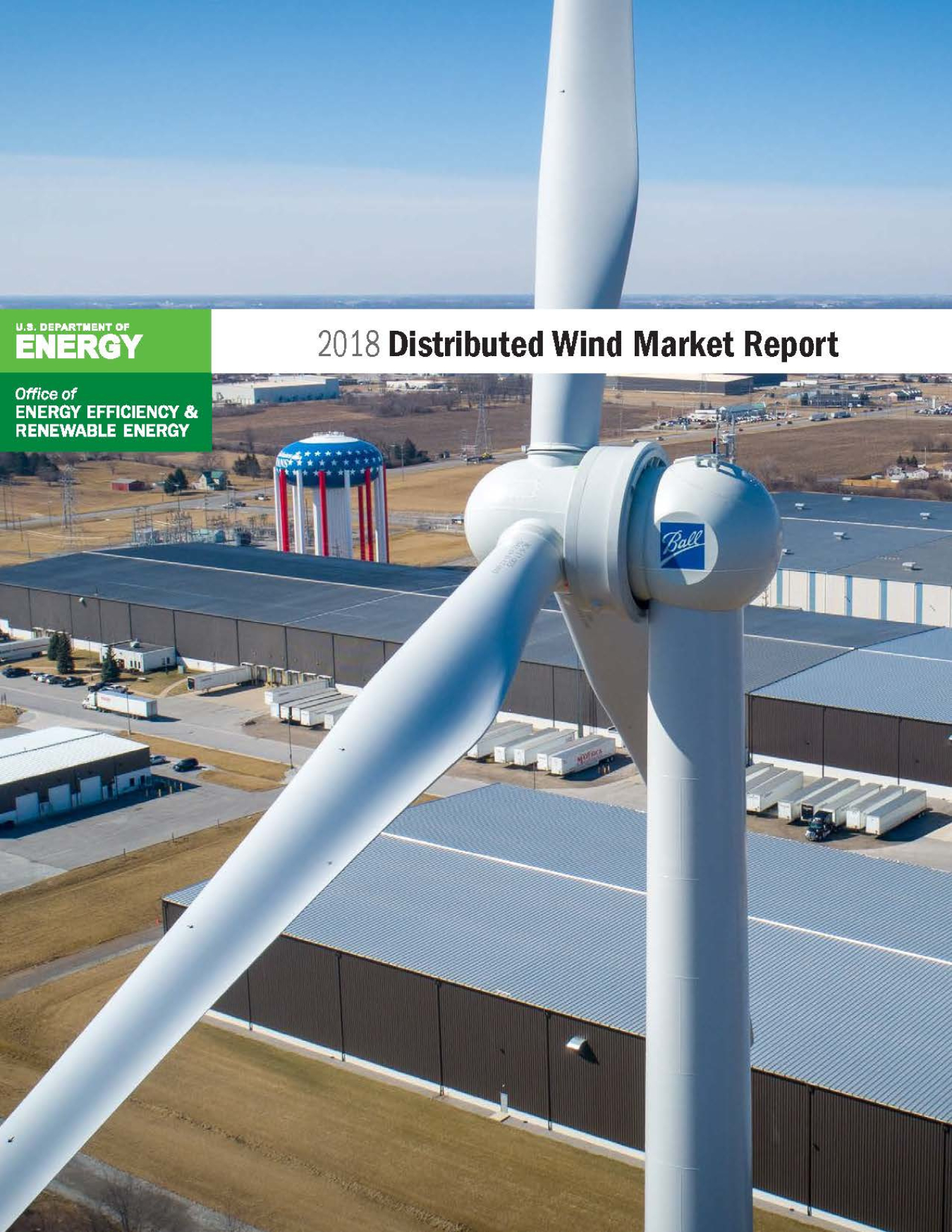The 2018 Distributed Wind Market Report provides stakeholders with statistics and analysis of the distributed wind market.
Wind Energy Technologies Office
August 2, 2019
The 2018 Distributed Wind Market Report provides stakeholders with statistics and analysis of the distributed wind market, along with insight into its trends and characteristics. The report analyzes distributed wind projects of all sizes and details the U.S. small wind market.
Download the full 2018 Distributed Wind Market Report.
Key Findings:
- U.S. distributed wind installed capacity now stands at 1,127 megawatts (MW) from over 83,000 turbines across all 50 states, Puerto Rico, the U.S. Virgin Islands, and Guam.
- In 2018, 12 states added 50.5 MW of distributed wind capacity from 2,684 turbines, representing $226 million in funding.
- The majority of this capacity came from distributed wind projects using large-scale turbines greater than 1 MW.
- U.S. exports of small wind turbines are being impacted by fluctuations in foreign markets.
- Three new turbine models have completed certification, bringing the total to ten small wind turbine models certified to the American Wind Energy Association or International Electrotechnical Commission standards.
- Small wind installed project costs have been relatively constant since 2014.
- The average capacity factor among the sample of projects built in the last few years was 31% for large-scale turbines used in distributed applications, and 17% for small wind.
- The levelized cost of distributed wind energy—which allows a comparison of technologies with different lifespans, sized, and initial capital costs—was 23 cents per kilowatt-hour (kWh) for documented small wind projects, 14 cents/kWh for mid-size turbine projects, and 5 cents/kWh for large-scale turbines used in distributed applications.
- Customers for newly-installed distributed wind capacity include distribution utilities (47%) and commercial and industrial projects (29%). A number of smaller turbines are also installed at homes, schools, and farms.
- Microturbines, with a capacity of less than 1 kilowatt, continue to be used in off-grid applications to power isolated infrastructure such as telecommunications equipment, well heads, and pipelines.


